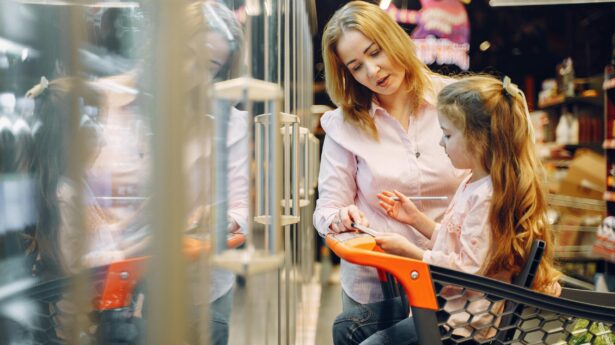
Insight
THE FUTURE OF PET: NEW GATEWAYS TO WELLBEING
As a team of seasoned Pet Category experts with significant experience studying consumer and market dynamics, Upland has delivered actionable growth solutions to a wide variety of Pet clients. From specialty foods and treats to hard goods and connected devices, we love putting our skills to use to support brands that make pets (and their people) happier.
In our latest series, The Future of Pet, we will be sharing findings from DisruptorID™, Upland’s systematic approach to identifying future opportunity landscapes that demonstrate what drivers will impact consumers and categories in the future. Many of the key shifts we are seeing on the horizon provide new insights that inform how pet care brands can better deliver on the emerging needs of pet parents’ and their evolving preferences.
The humanization and growing recognition of pets as family has led to a new level of premiumization in the pet care industry, from human-grade food to experiences and wearables. Consumer’s tight bond with these companion animals has inspired an enlightened perspective on how to best care for them, including more careful considerations of what they eat, where they sleep and how they play. Future opportunity exists for those brands that can tap into the cultural, social, and psychographic shifts that have led to the reimagining of what wellbeing means for pets – and their owners.
THE RISE OF ALLOPARENTING
Nearly two thirds of US households include a pet and in 2022, Americans spent $136.8 billion on their pets. Millennials make up the largest percentage of current pet owners, followed by Gen X and Baby Boomers. We expect Gen Z pet ownership to increase as they age and become more financially independent, especially as more people are opting to delay parenthood or be child-free.
- According to the U.S. Census Bureau, 43% of US homes are childfree, a 7% increase in childlessness since 2012.
- In 2021, Pew Research Center, found that in one study, 44% of non-parents (ages 18-49) reported being “not too or not at all likely” to have children, an increase of 7% from 2018.
The evolved human tendency to alloparent, when someone other than the biological parent cares for an offspring, may help explain the growth of pet parenting. As Shelly Volsche, Clinical Assistant Professor of Anthropology at Boise State University, explains “If people evolved to alloparent, and our environment is now making caring for children more difficult or less appealing to some, it makes sense for people to alloparent other species entering their homes. Alloparenting companion animals can offer a way to fulfill the evolved need to nurture while reducing the investment of time, money and emotional energy compared to raising children.”
Whether it’s empty nesters looking for companionship or younger consumers delaying parenthood, pets are providing a level of deep emotional fulfillment across age cohorts. Owning and caring for pets is often integrated into personal and social identity, with many viewing pet parenting as a significant part of their lifestyle, self-expression, and good mental health.

THE WHOLE PET LIFESTYLE
As pets become more like family members and, in some cases, even filling the role of children, there is a growing desire among consumers to help their beloved pets lead happier and healthier lives by providing an optimized environment for them. This holistic approach includes several broad movements that stand out to us:
- Enhanced enrichment activities – from science-backed sensory toys to social clubs and experiences
- Advanced products and services for health care – from smart pet devices to reimagined vet care
- Next-gen, premium food and treats – from fresh, human-grade foods to superfood powders and treats
One way Upland’s DisruptorID analysis helps predict future areas of market energy is to deeply explore each of these movements, looking for examples of products manifesting within the ecosystem. We group product activity we see into theme areas which provide proof points and inspiration for what tomorrow’s “shelves” might look. For Pet, some themes include:
1. EXPERIENTIAL JOURNEYS
A recent collaboration between DOG PPL a ‘canine social club’ and Modern Animal vet care speaks to a shift we are seeing in human wellness – the blurring lines between lifestyle and medical interventions to improve overall well-being. Similarly, the partnership between DOG PPL and Modern Animal “aims to revolutionize the landscape of pet wellness and community engagement to inspire, educate and support pet parents in their quest to provide healthy and enriching experiences for their pets. By combining forces between a lifestyle brand and medical providers, they can better meet the full range of pet’s (and their humans) needs.
Beyond fulfilling the evolved need to nurture, pet parents can experience a range of other benefits as a result of having a pet in their household, such as promoting more physical activity and supporting better coping with life’s stressors.
- 76% of pet owners report that their personal health has improved as a result of owning a pet
- 87% of pet owners say that they have experienced mental health improvements from pet ownership (HABRI.org)
In the highly competitive pet care market, brands that can uniquely cater to both pet and human needs are able to differentiate themselves from competitors. Differentiation can include innovative products, ethical sourcing, sustainability practices, or exceptional customer service. As pet parents, they want to feel good about the products they purchase for their pets. Brands that appeal to this emotional aspect by demonstrating care, ethics, and responsibility in their products can create a deeper connection with their customers and build customer loyalty.
2. SCIENCE-BASED & DATA INFORMED
Pet parents are looking to research and adopting an evidence-driven approach to caring for their pets, with the growing desire to treat pets as well as they would a human family member. Across the board, the pet industry is responding with growing R&D in pet science and technology around health and monitoring, play products customized to certain pets and breeds specific needs, and creating food and treat options that are scientifically synched up with their true nutritional requirements.
- The pet tech market size has grown from $5.24 billion in 2023 to $6.28 billion in 2024 at a CAGR of 19.8% (Pet Tech Global Market) with smart devices like the Litter Robot by Whisker, a self-cleaning cat litter box and Companion’s AI-powered, in-home dog-training robot
- Valued at USD 695.5 million in 2021, the US pet wearable market is expected to have a 12.9% CAGR from 2022-2030 (Grand View Research), with wearable devices like Whistle’s GPS-enabled dog collars that can track location and provide health monitoring data
- With all of this data, brands like This Dog is Unique are able to create more personalized products, like supplement regimens for each dog’s individual set of health concerns.
3. ELEVATED NUTRITION
When it comes to food and treats, pet parents are much more informed and have gotten smarter about what they are looking for, such as shopping for the specific benefits, seeking primary ingredients, or the exclusion of unwanted ingredients. Today’s pet parents are much more sophisticated consumers when it comes to understanding pet food. However, it still remains a confusing category with variability in certifications. Key areas we see with potential for continued future growth include Fresh, Premium Private Label and Freeze Dried.
Fresh: Viewed as more nutrient-dense compared to kibble and with greater perceived transparency, fresh (refrigerated) pet food offers consumers a way to give their pets a diet that contributes to an overall healthier life. Coupled with the growing desire from consumers, there is also an increase in the accessibility of this type of food, from more dedicated refrigeration in-stores and options for direct-to-consumer shipping.
- FreshPet reported a net sales increase of 28.8% to $766.9 million for 2023 compared to $595.3 million in 2022
- Consumer research firm Mintel found that more than half of U.S. pet food buyers perceive freshly prepared foods to be healthy
Premium Private Label: Private label pet food sales in the US rose 25.6% in 2023. With many consumers feeling a pinch on their wallets, some are opting for private label equivalents that offer the same transparency, clean ingredients and rich nutritional value they get in premium pet food products, such as:
- Kirkland Signature pet food which is known for offering high-quality ingredients at a relatively affordable price. Their formulas often include real meat as the first ingredient and avoid artificial preservatives, colors, and flavors.
Freeze-Dried: Becoming more prevalent in general from snacks to baby food, we are seeing increases in the overall acceptance of freeze-dried foods. There is a growing recognition that this method of preparing food is not just for outer space. It has taste, great texture, can maximize the nutrients in foods without having to add preservatives many people seek to avoid. There are clearly massive benefits for the consumer and manufacturer, from nutrient retention, great sensory appeal (i.e., smell, texture) but we see the major challenge being how it is positioned, freeze-dried is a process, not the benefit. We look forward to seeing how this particular opportunity will be unlocked in the coming years.
WHAT THIS ALL MEANS FOR BRANDS
Driven by the evolving relationship between humans and their pets, we are seeing significant innovation in the pet industry. The heightened expectations for pet products and services that mirror those of human standards is growing the demand for premium products, advanced and more holistic healthcare, and enriched lifestyles for pets. This is fueled in part by the rise in pet ownership among Millennials and Gen Z, who are more inclined to invest in high-quality, innovative, and data-backed pet care solutions, from tech to premium food.
Overall, the future of the pet care industry lies in its ability to adapt to these changing consumer preferences and to continue innovating in ways that enhance the lives of both pets and their owners. Brands that can successfully anticipate and navigate this landscape by offering scientifically- validated products that center on pet benefits while also understanding and delivering on the pet parent’s deep emotional need to be a good “mom” or good “dad”, will not only capture market share but also build lasting relationships with their consumers.
Upland’s past experience in Pet includes uncovering new consumer insights, mapping future opportunity paths that reflect where the world is going, and creating new positioning and product concepts. Reach out to jacqueline.holliday@upland.com to discuss your strategy, innovation, and branding needs in Pet (or other rapidly evolving categories).



